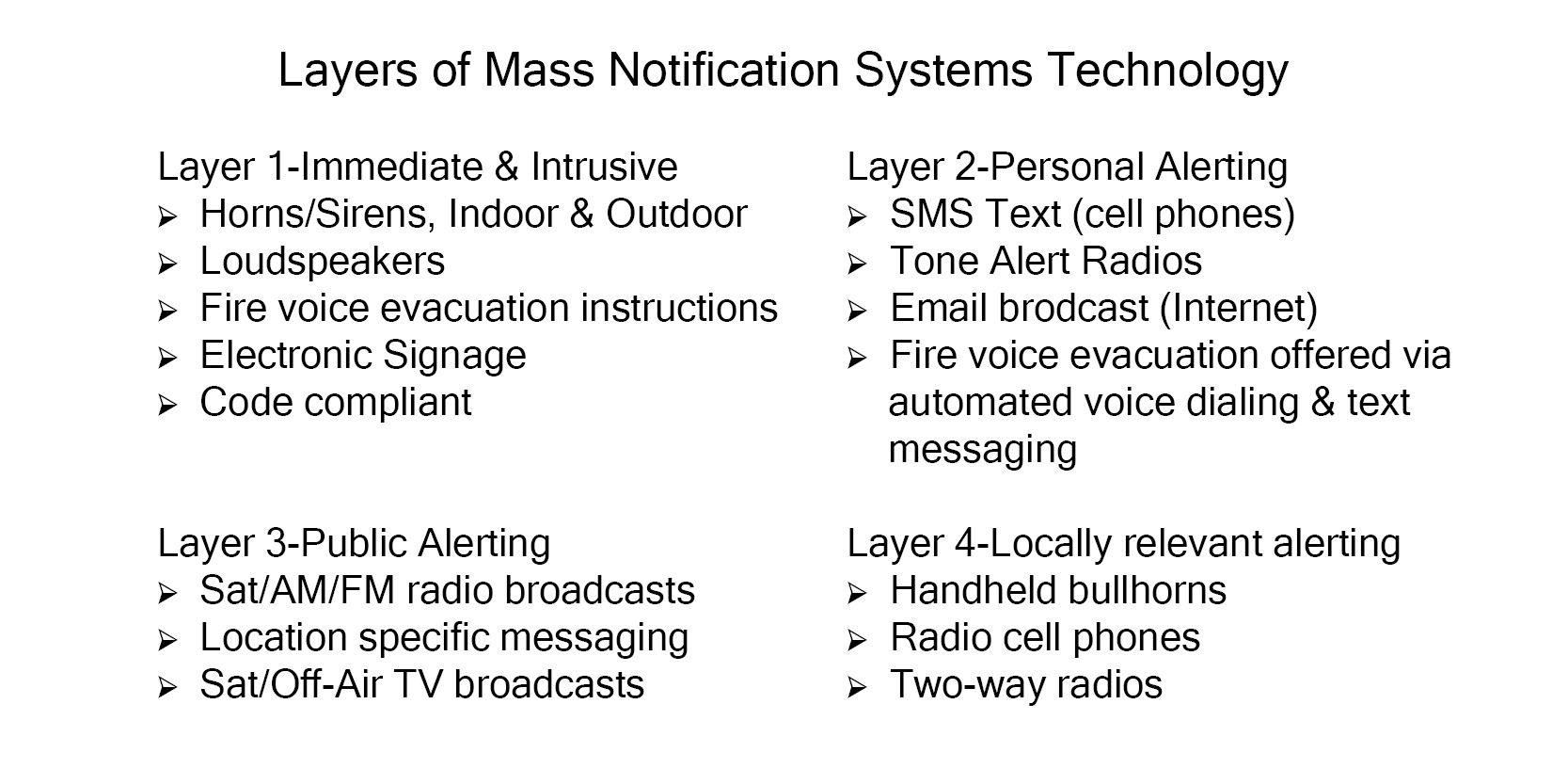Building Mass Notification Into Fire Alarm Systems
 If nothing else has been learned about security in a post-nine-eleven world, it’s that emergency communications technologies need to be multi-layered, redundant and able, wherever possible, to talk with one another. They may have been the last of the “old school hardwired,” code-driven analog, life-safety technology—but fire alarm systems have finally found their way into digital networks. First it was the durability and simplicity of digital hardware, but functionality followed rapidly as the advantages of networked devices became clear to fire protection and enterprise safety professionals.
If nothing else has been learned about security in a post-nine-eleven world, it’s that emergency communications technologies need to be multi-layered, redundant and able, wherever possible, to talk with one another. They may have been the last of the “old school hardwired,” code-driven analog, life-safety technology—but fire alarm systems have finally found their way into digital networks. First it was the durability and simplicity of digital hardware, but functionality followed rapidly as the advantages of networked devices became clear to fire protection and enterprise safety professionals.
Digital features, of course, yield all manner of functional improvements together with the flexibility that comes with integration with larger networks. Institutional and operational documentation for compliance and maintenance is easier with Web based reporting, wireless integration and centralized management. More devices can be in more places with a smaller footprint while featuring improved sensors and simpler designs making implementation both less visible and more efficient. IP connectivity also means that the fire alarm can be made to work with other security communications already functioning on the network. It also enables these systems to serve both their traditional alarm role, while providing a supplemental speaker system for mass notification which adds useful redundancy to the broader menu of emergency services communications.
Fire alarm systems are traditional ECS systems but they offer mass notification by nature, as single purpose emergency communication—alerting the fire department and the inhabitants of the facility to a very specific threat. While this remains true, the flexibility derived from digital signaling, brings the ability to push voice messaging over fire alarm speakers, which by itself lends valuable additional overlap of emergency content delivery.
The question then becomes one of adding a feature, not to replace what may be a perfectly functional public address capability, but rather to bring a redundant layer of vital safety messaging in the moment of crisis. In particular it offers the potential in a genuine emergency to add life-saving/way-finding information to communications that need to reach a potentially vulnerable population the event of an especially dangerous fire emergency.
So what’s really needed? First a clear view of the multi-lateral nature of emergency communications in the age of near universal access to mobile phones and personal digital devices. The divide is simple but not always addressed between public and personal communications outreach. Both are needed. First, traditional alarms create the emergency occasion, with the urgency of their loud and obtrusive horns and loudspeakers, strobe-lights and any electronic signage in the facility designed to optimize way-finding in an emergency. Second, and reinforcing the public way-finding messages, are the personal alerts delivered via cell phone using Short Message Service (SMS) and auto-dialed cellphone voice messaging, etc. These may be supplemented in the case of a large scale event by public alerts via broadcast media, etc. The following illustrates possible Mass Notification System layering for an emergency event.

There’s more, of course. In order to achieve effective integration of these layers, especially if the initial and immediately intrusive alarm process is to be optimized for way-finding and through the use of loudspeakers with fire-voice evacuation content.
First and foremost, it means that public safety and security messages transmitted over a fire alarm system need to be intelligible. It’s been a while coming. Loud but intelligible, the current standard of fire alarm voice intelligibility is defined as “audible voice information that is distinguishable and understandable.” The first requirements were found within Chapter 4, Notification Appliances for Fire Alarm Systems. 4-3.1.5 “Emergency voice/alarm communications systems shall be capable of the reproduction of prerecorded, synthesized or live (for example, microphone, telephone handset and radio) messages with voice intelligibility.”*
Then in the 2007 edition of NFPA 72, voice intelligibility became more prominent. “A voice signal must have sufficient audibility to result in intelligible communication.”* Intelligibility modeling/measurements should be both subject determined and instrument determined includes audibility as well a number of other factors when determining whether the voice signal is adequate to the standard.
The requirements for intelligibility are found within Chapter 18 covering Notification Appliances and in Chapter 24, Emergency Communications Systems. In addition, a new Annex D, Speech Intelligibility was added. In short, achieving intelligiblity in a fire alarm system is doable; but the speaker that drives the voice message has to meet the intelligibility standard for the space. So knowing what’s required for public v. private spaces with a specific occupancy load is essential to any design. The benefits in added safety of adding a voice capability to traditional fire alarm can’t be overemphasized.
*Campus Safety Magazine, September 2014, “Understanding Audibility Requirements for Emergency Communications” http://bit.ly/1qvE5dm